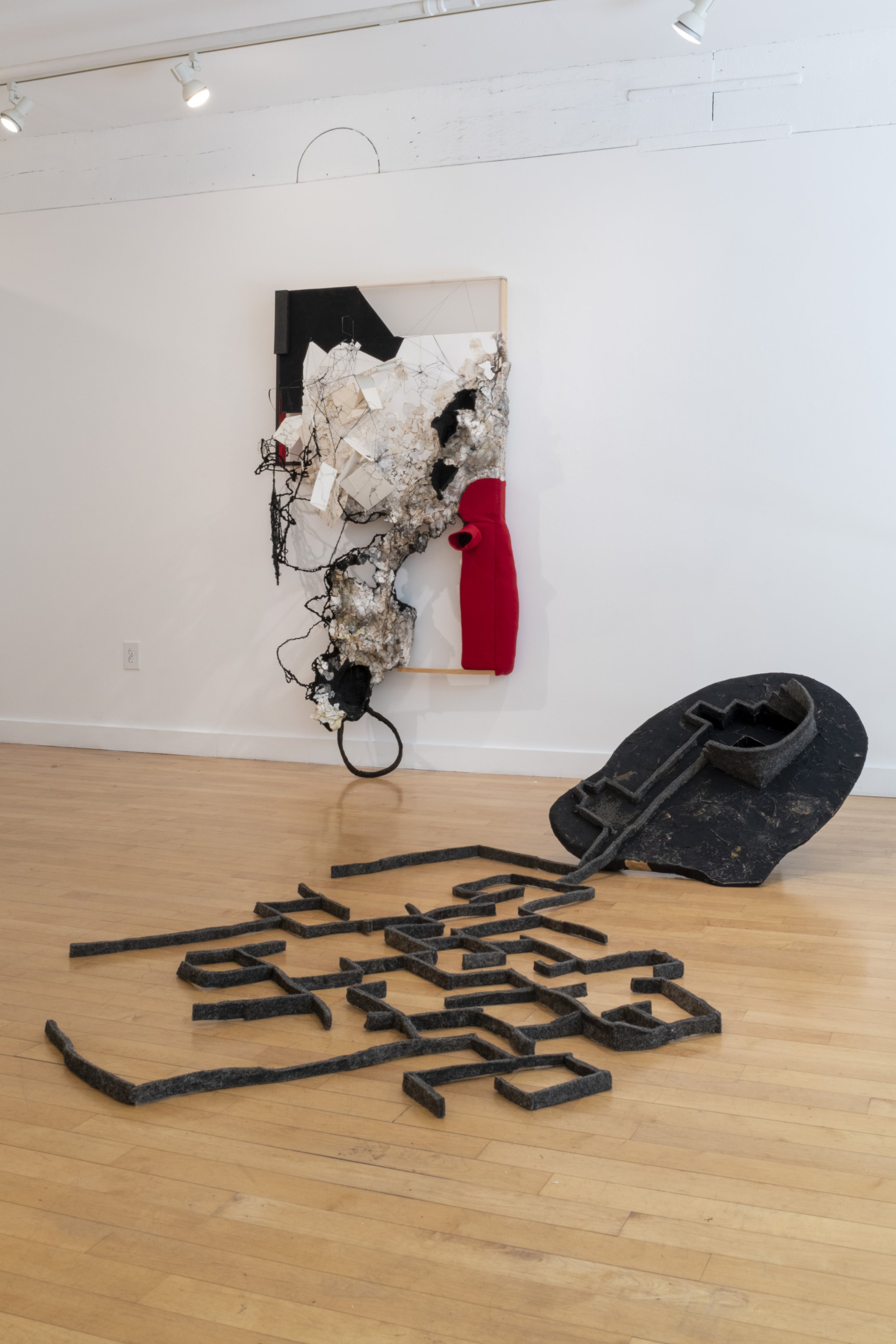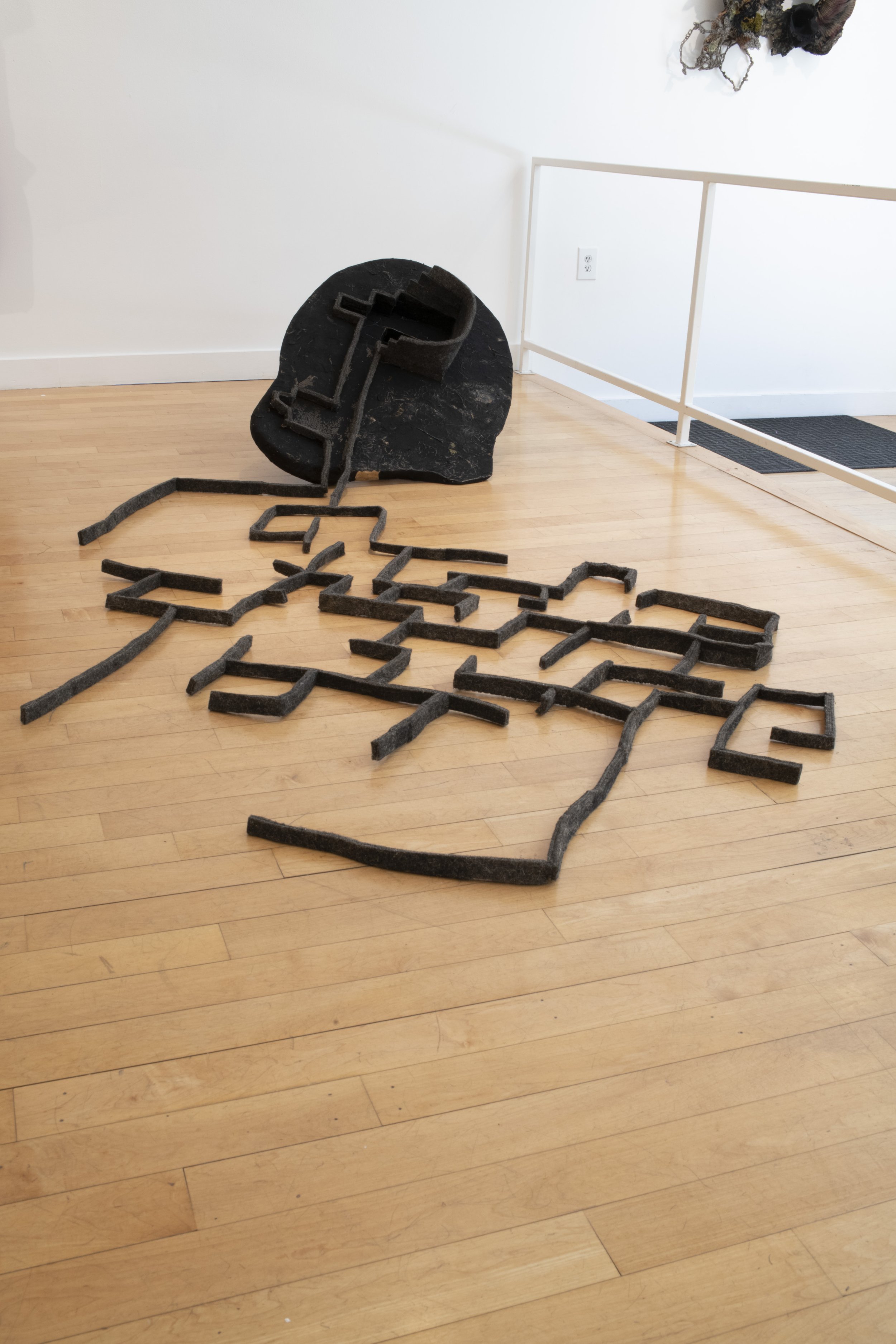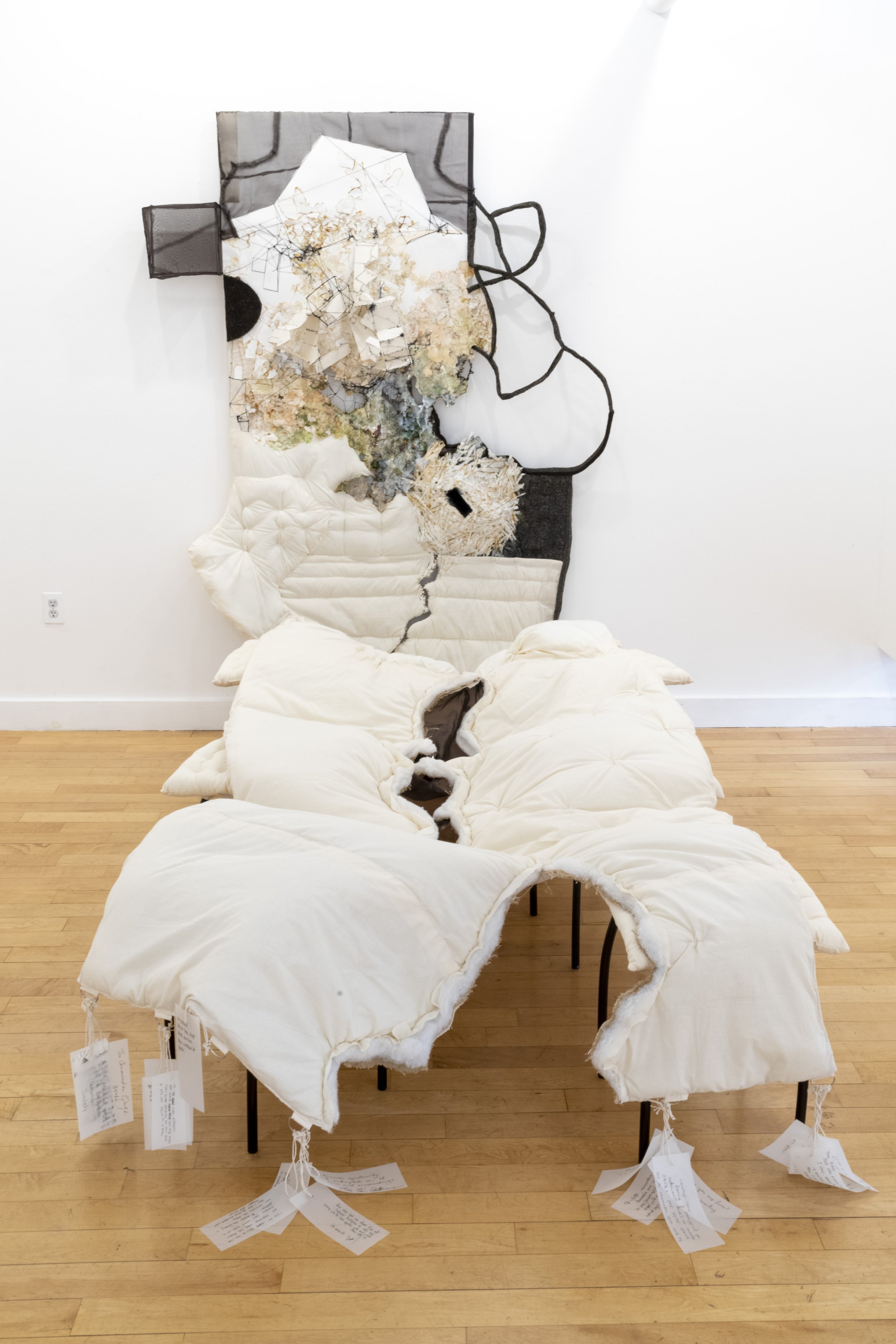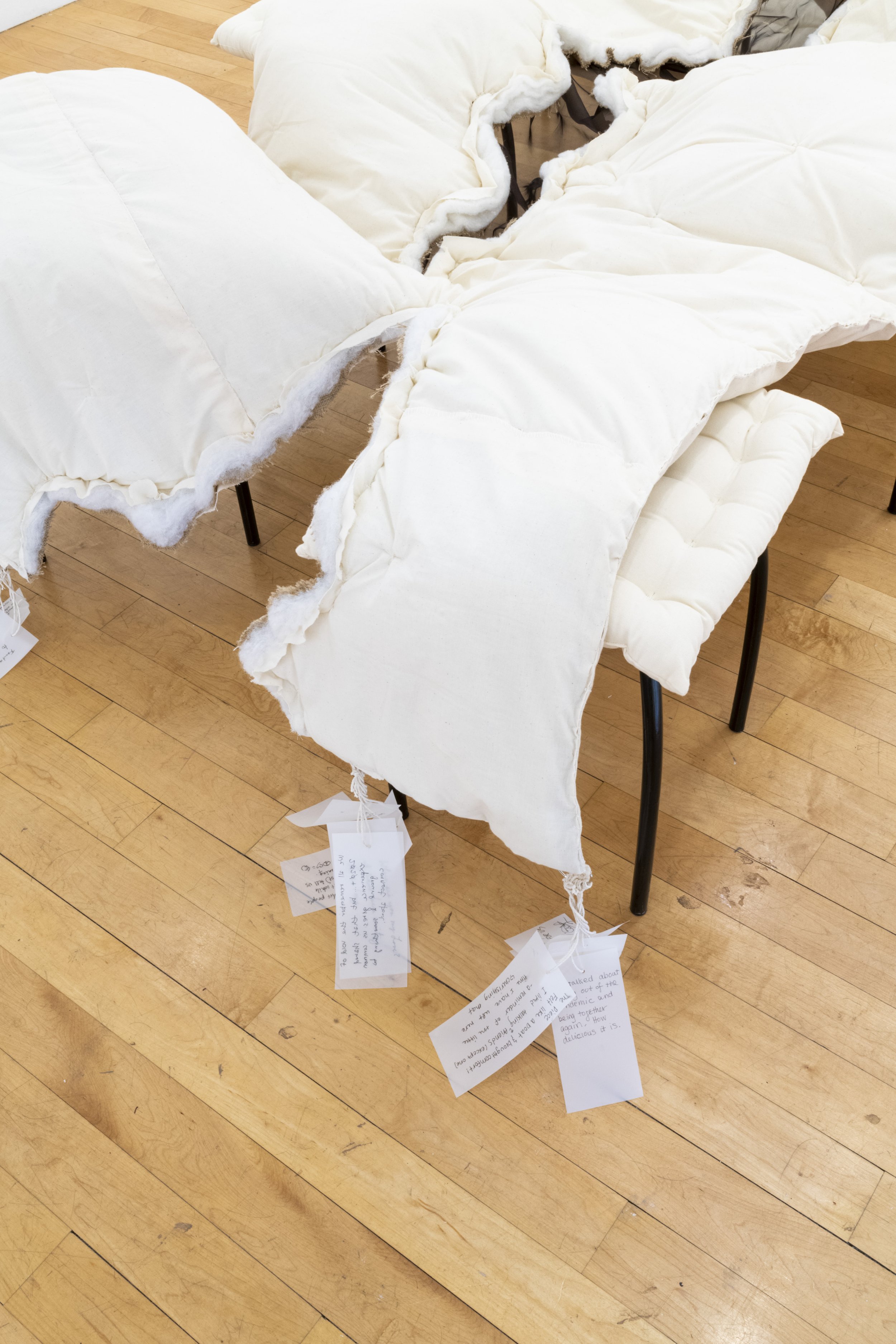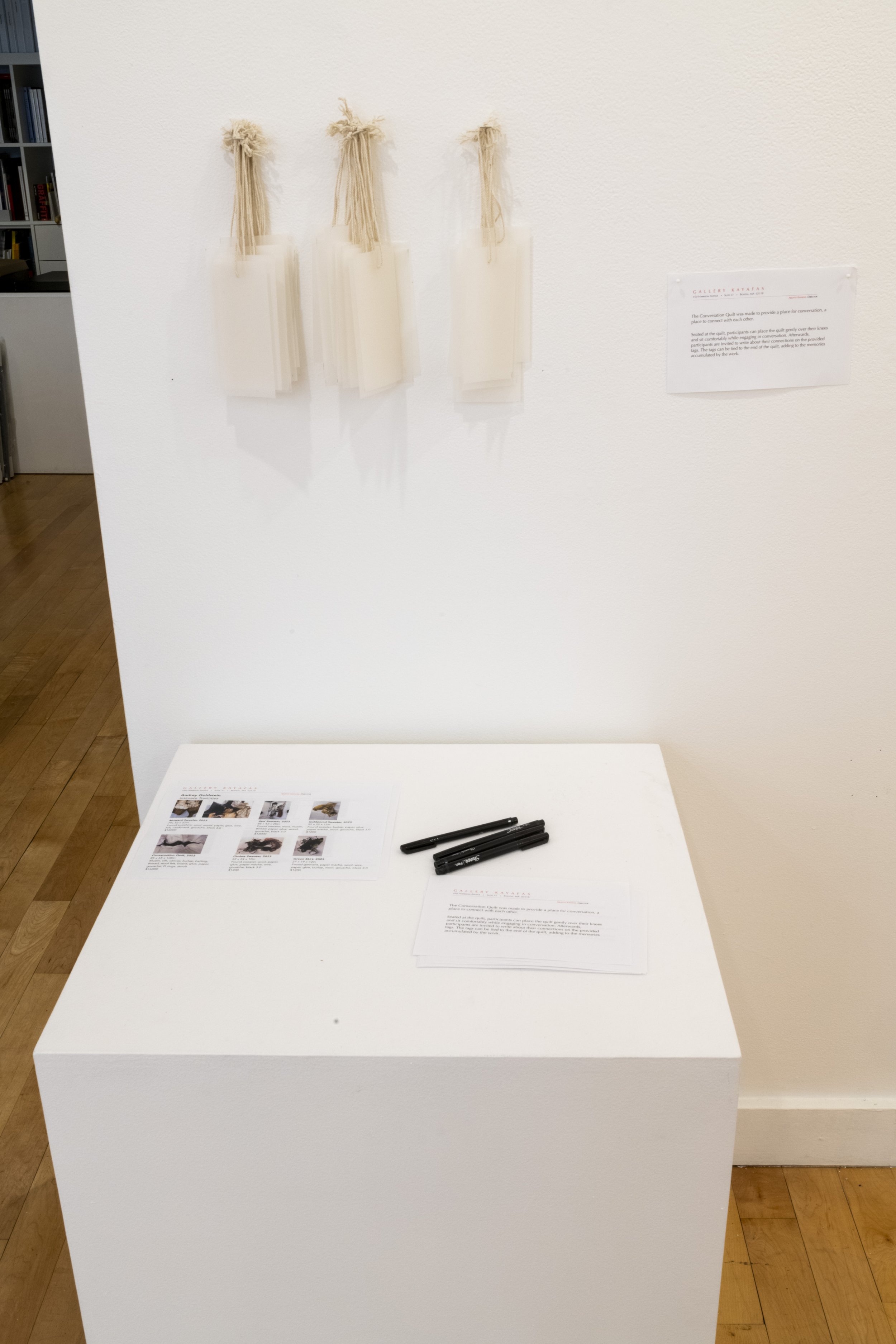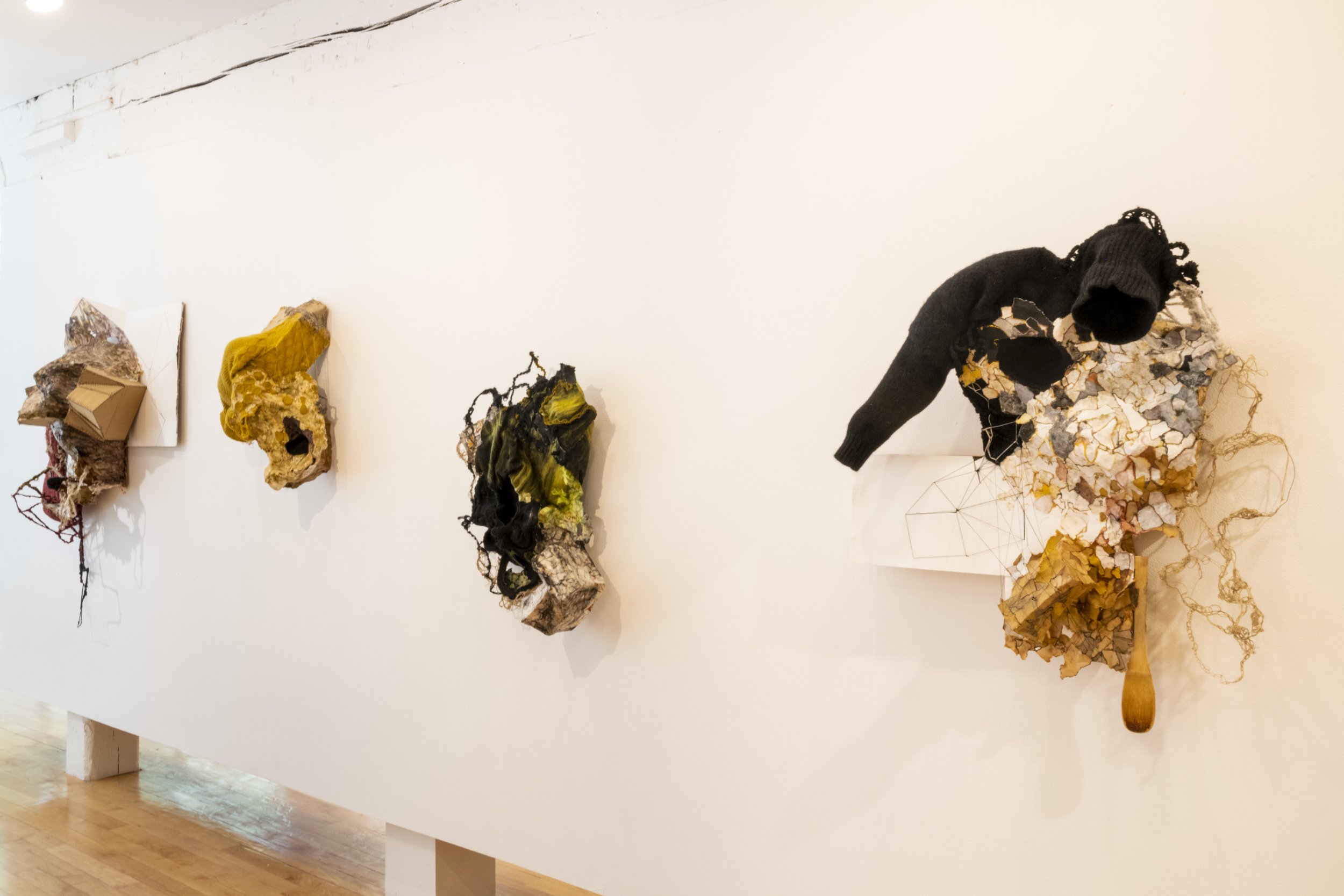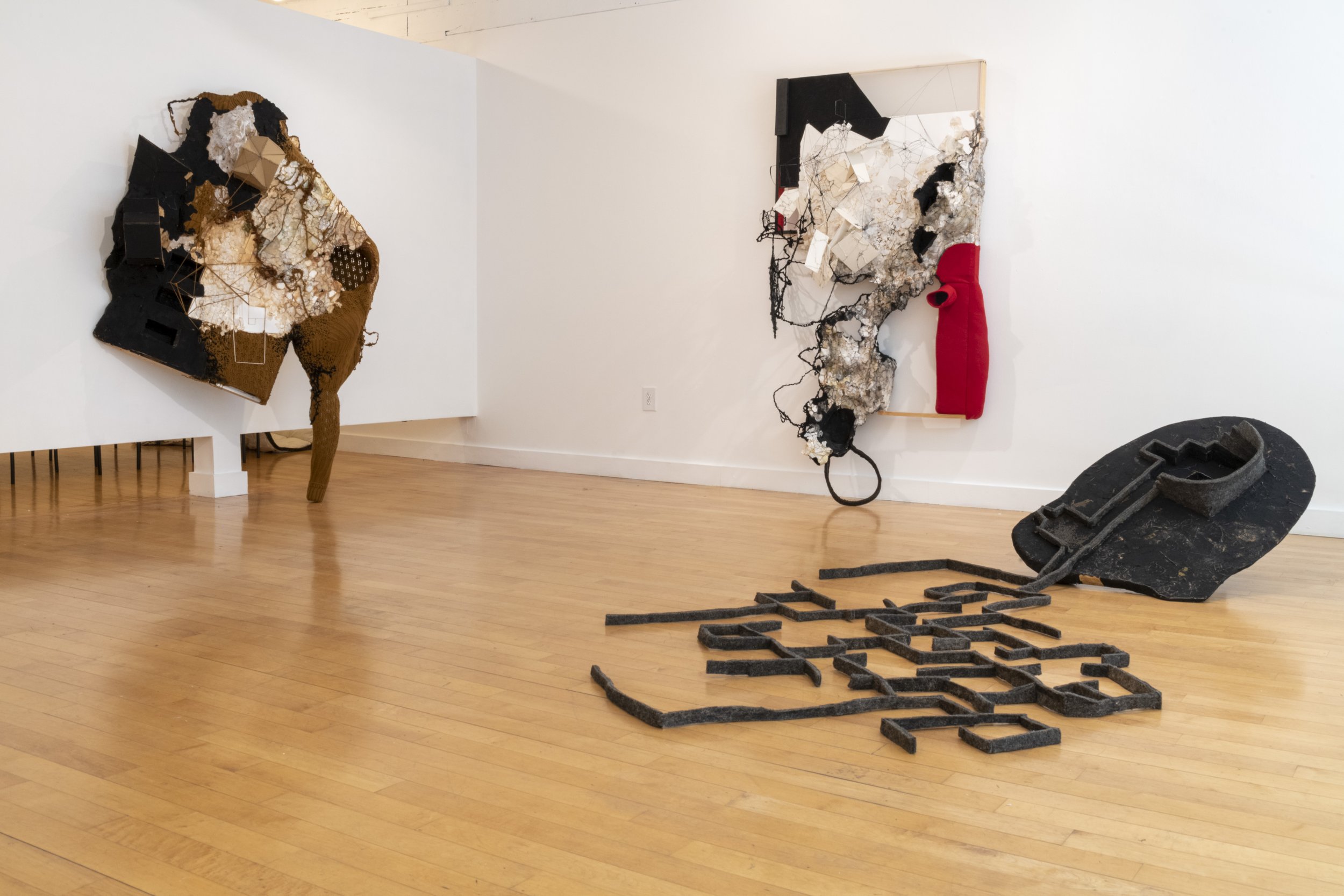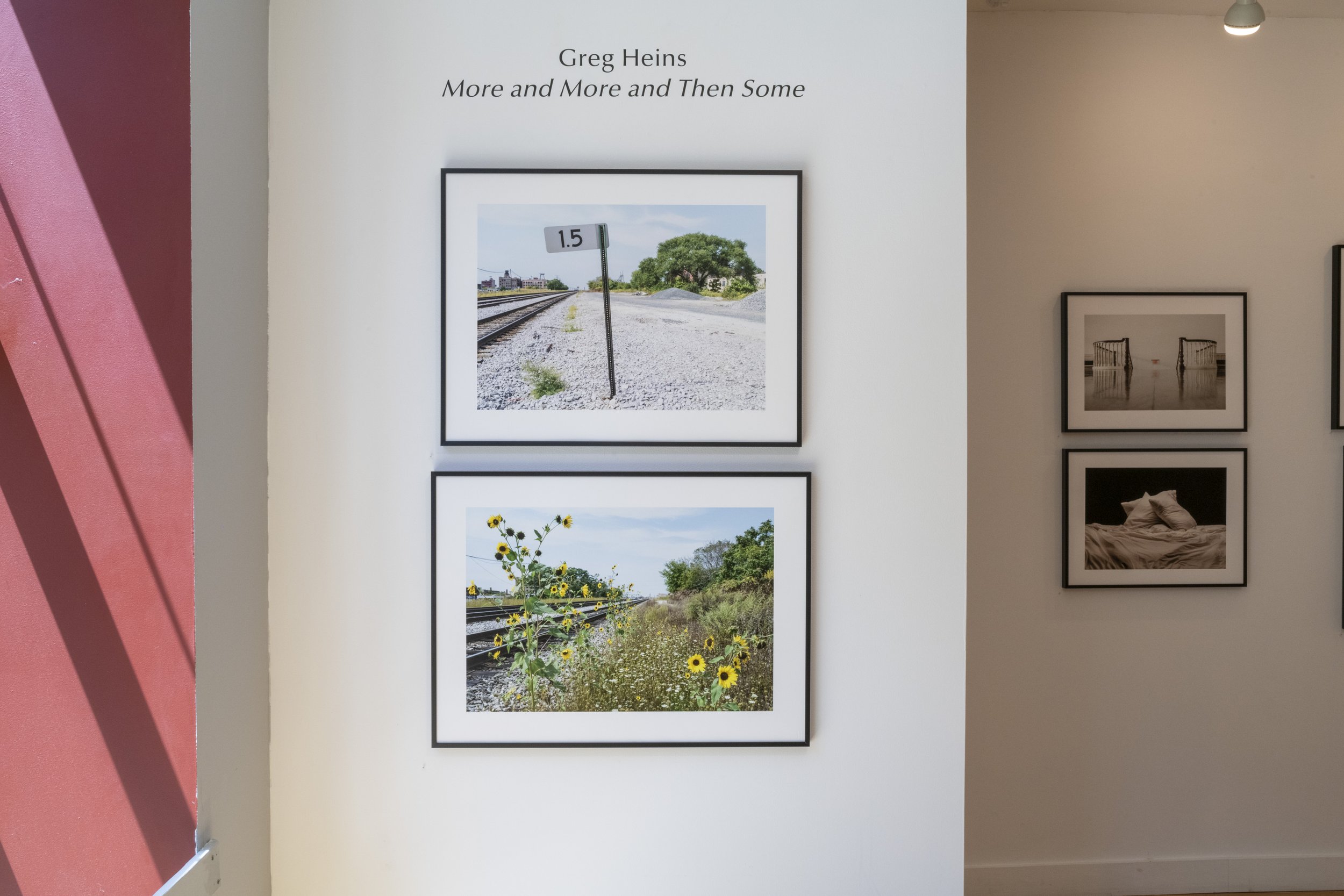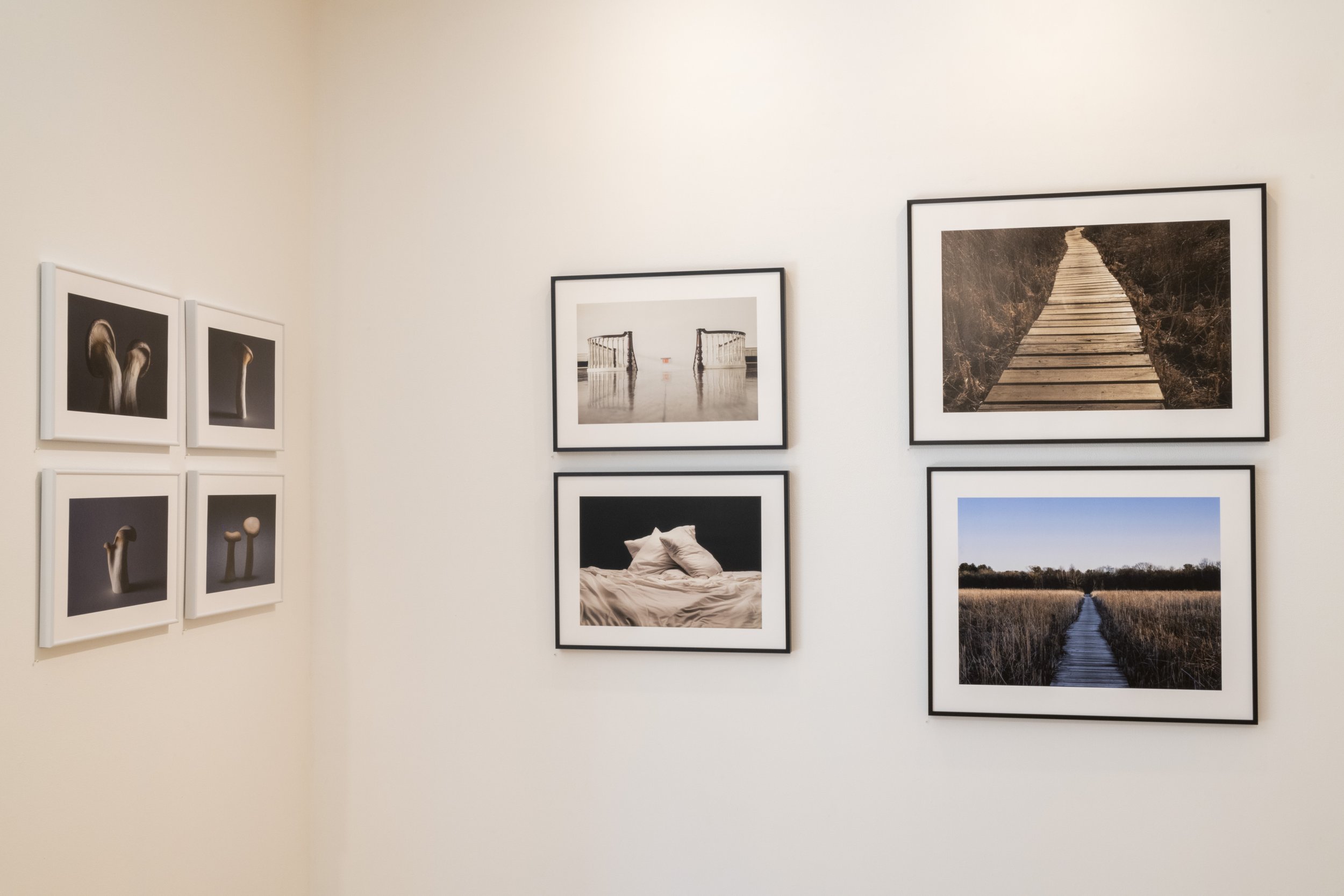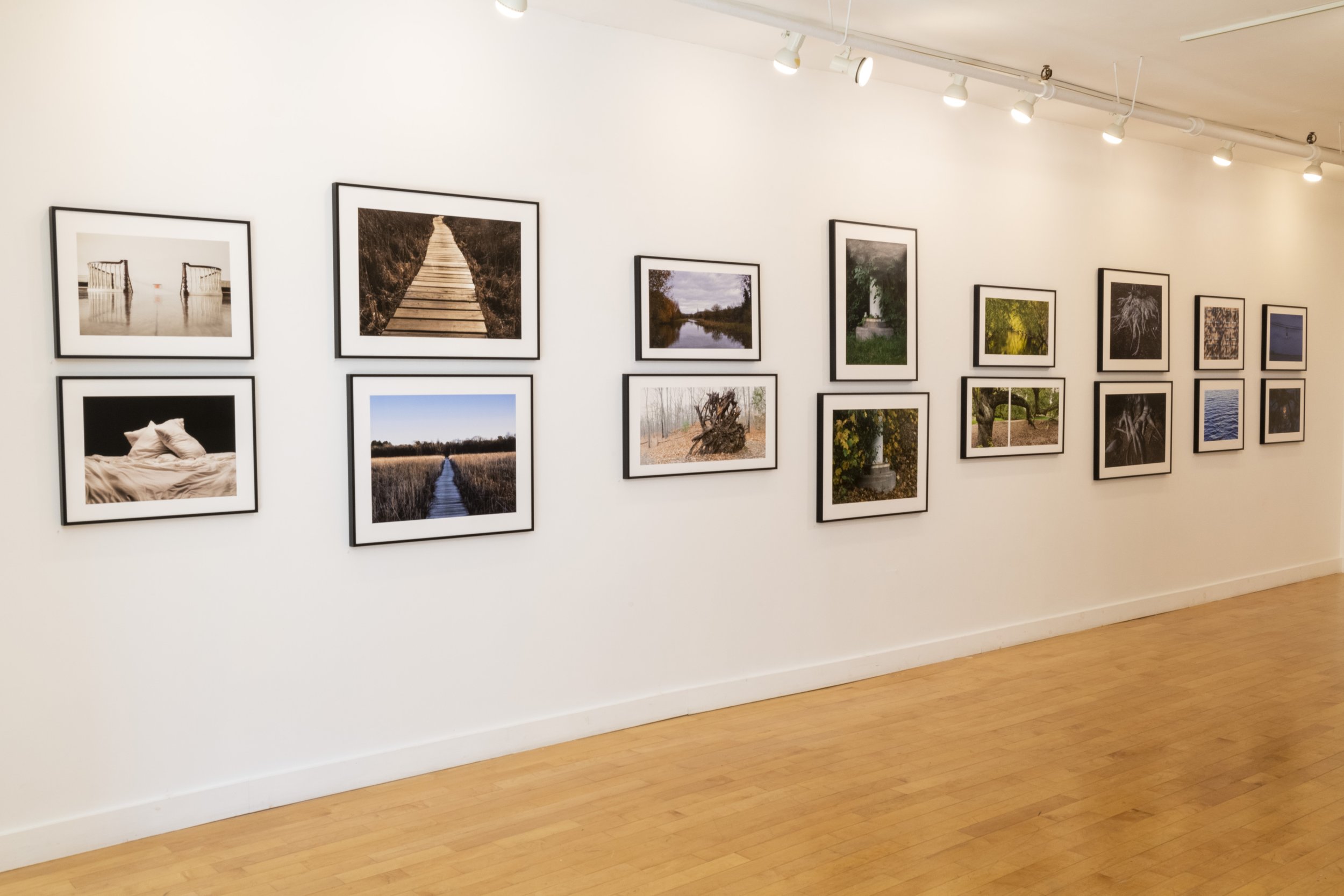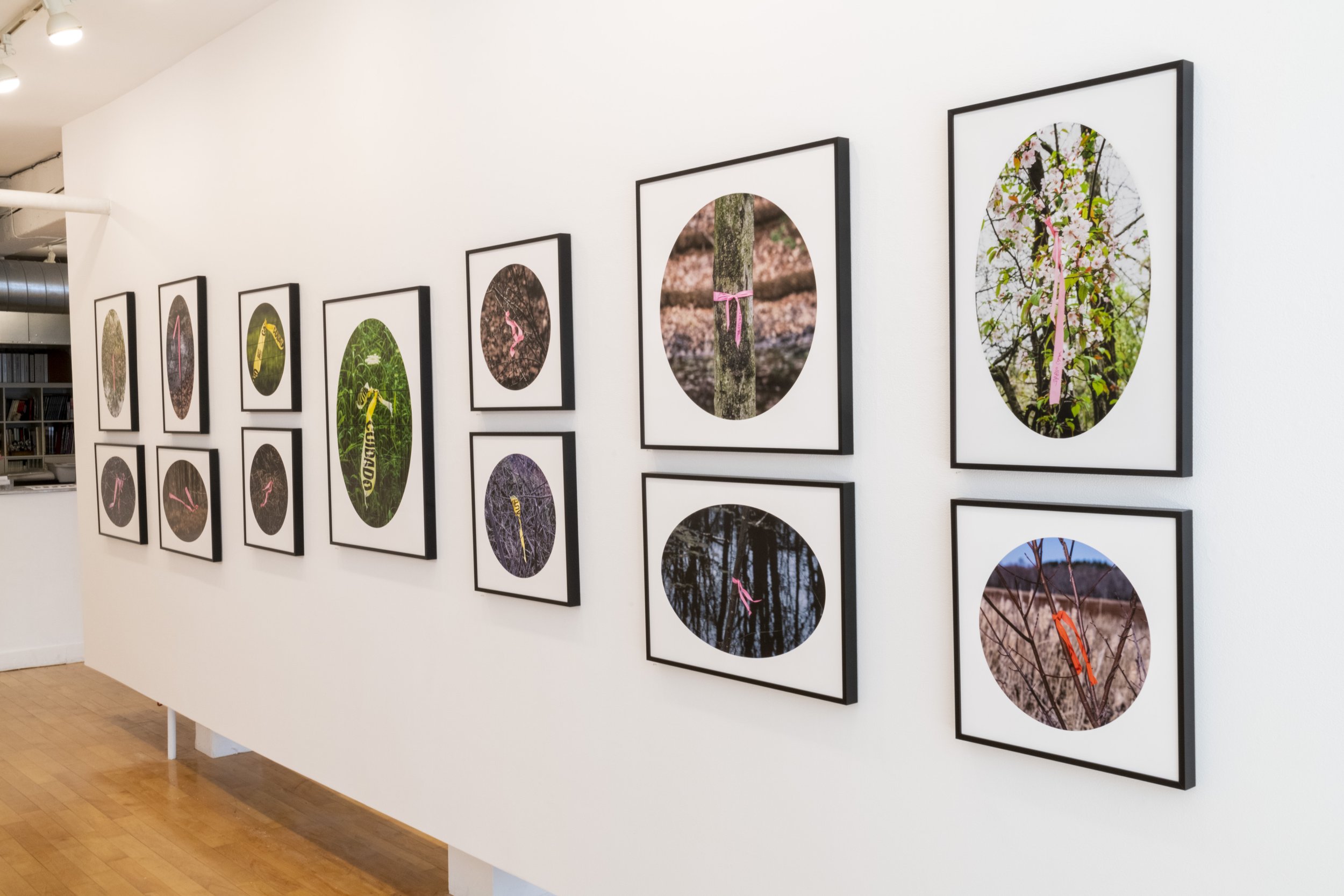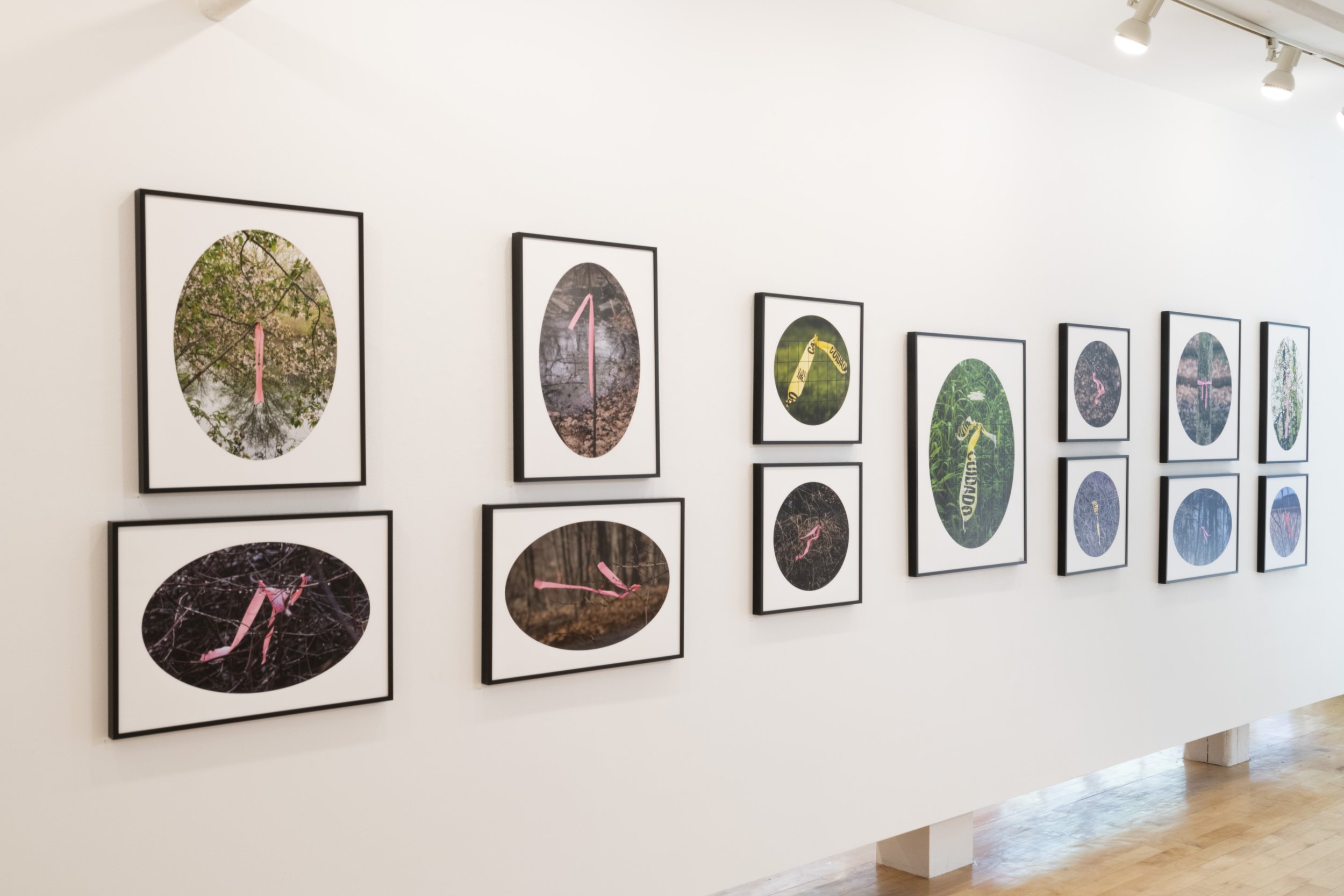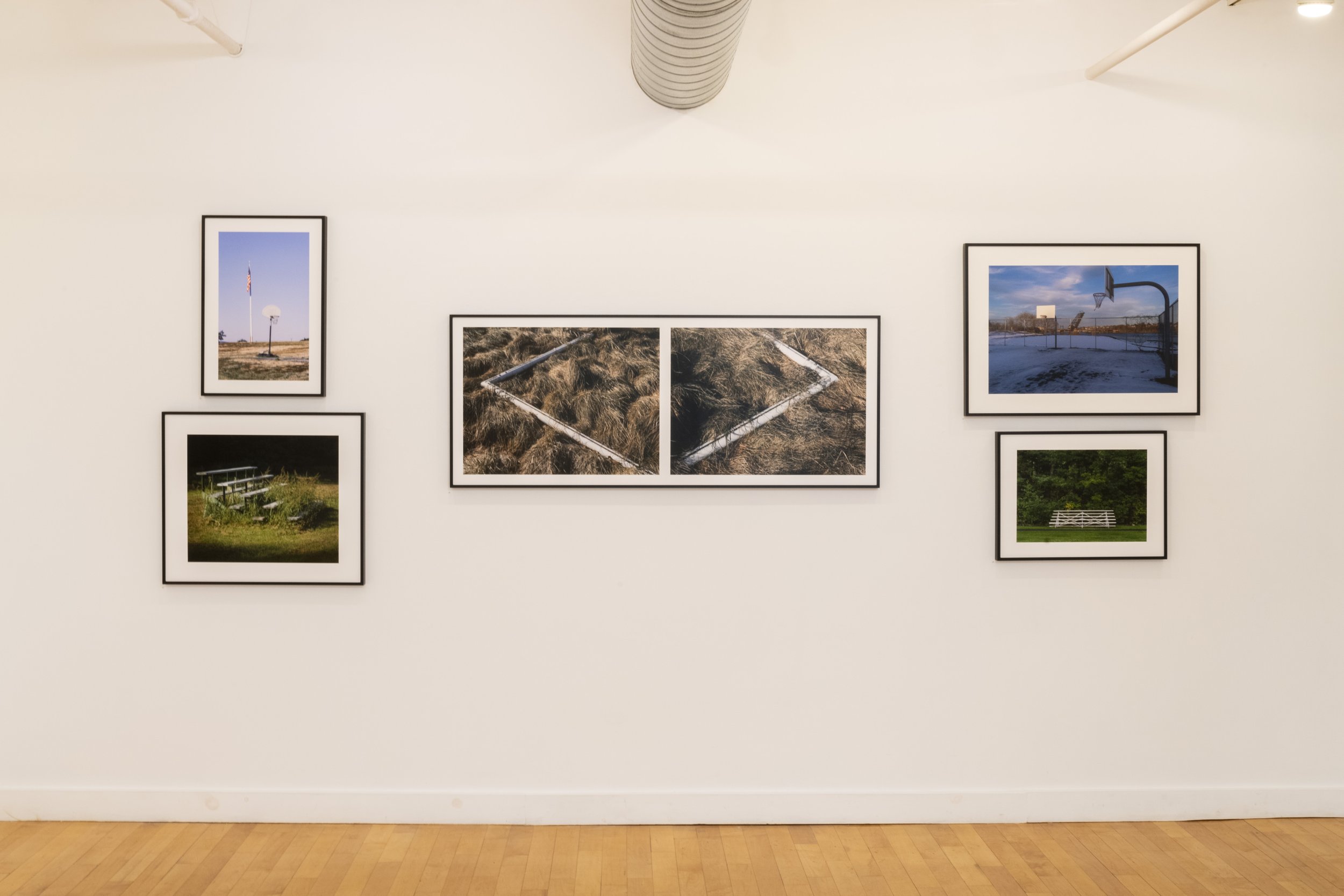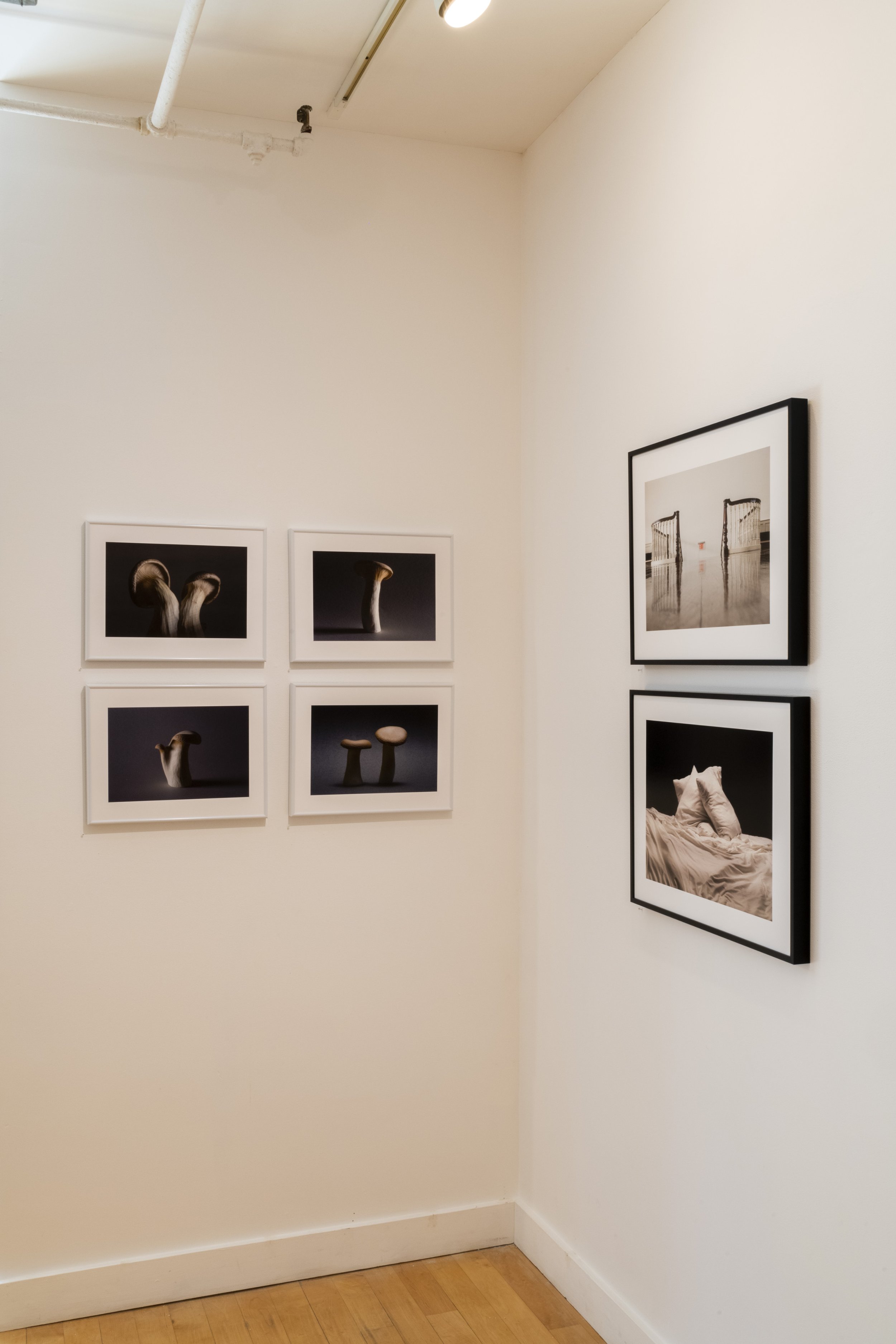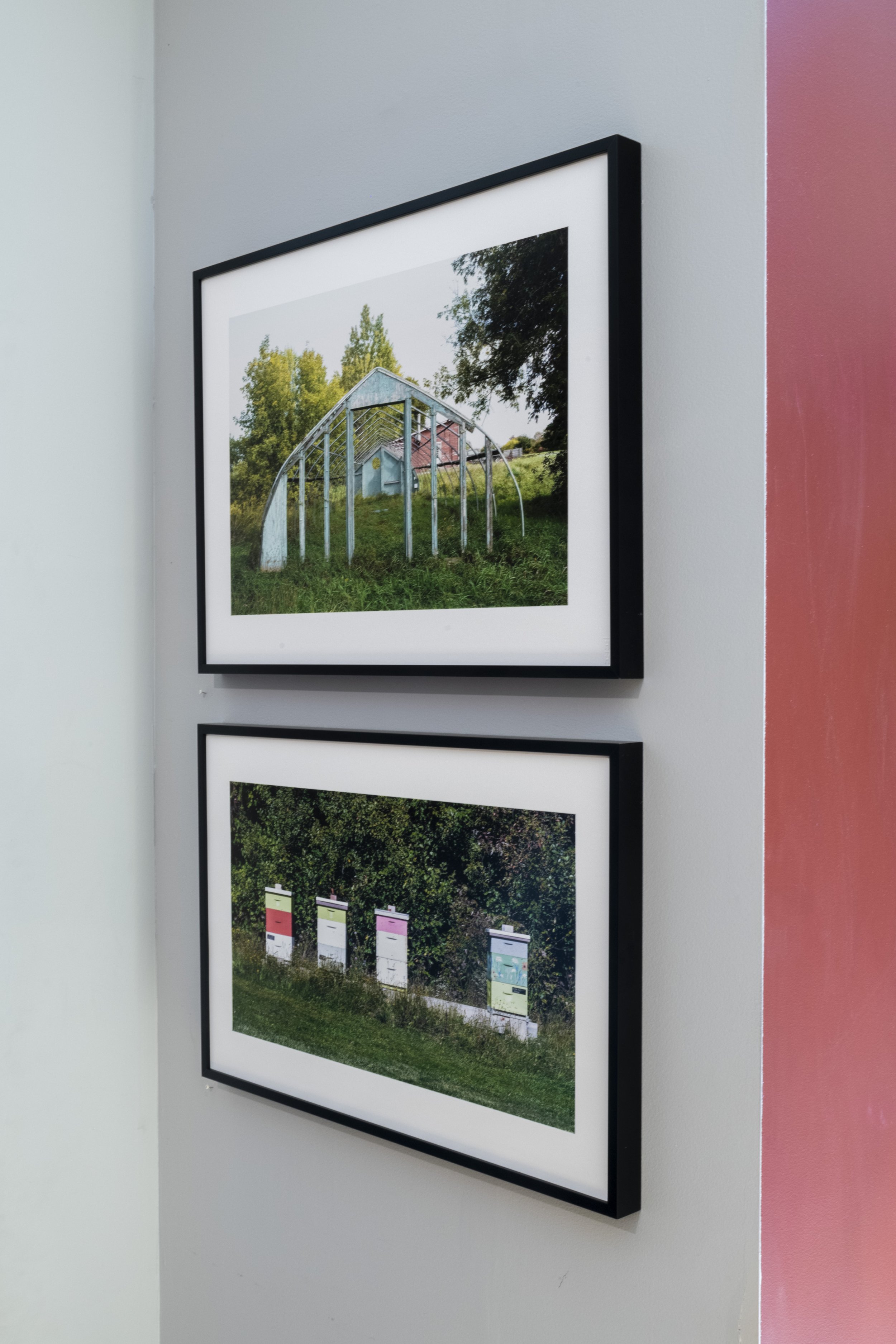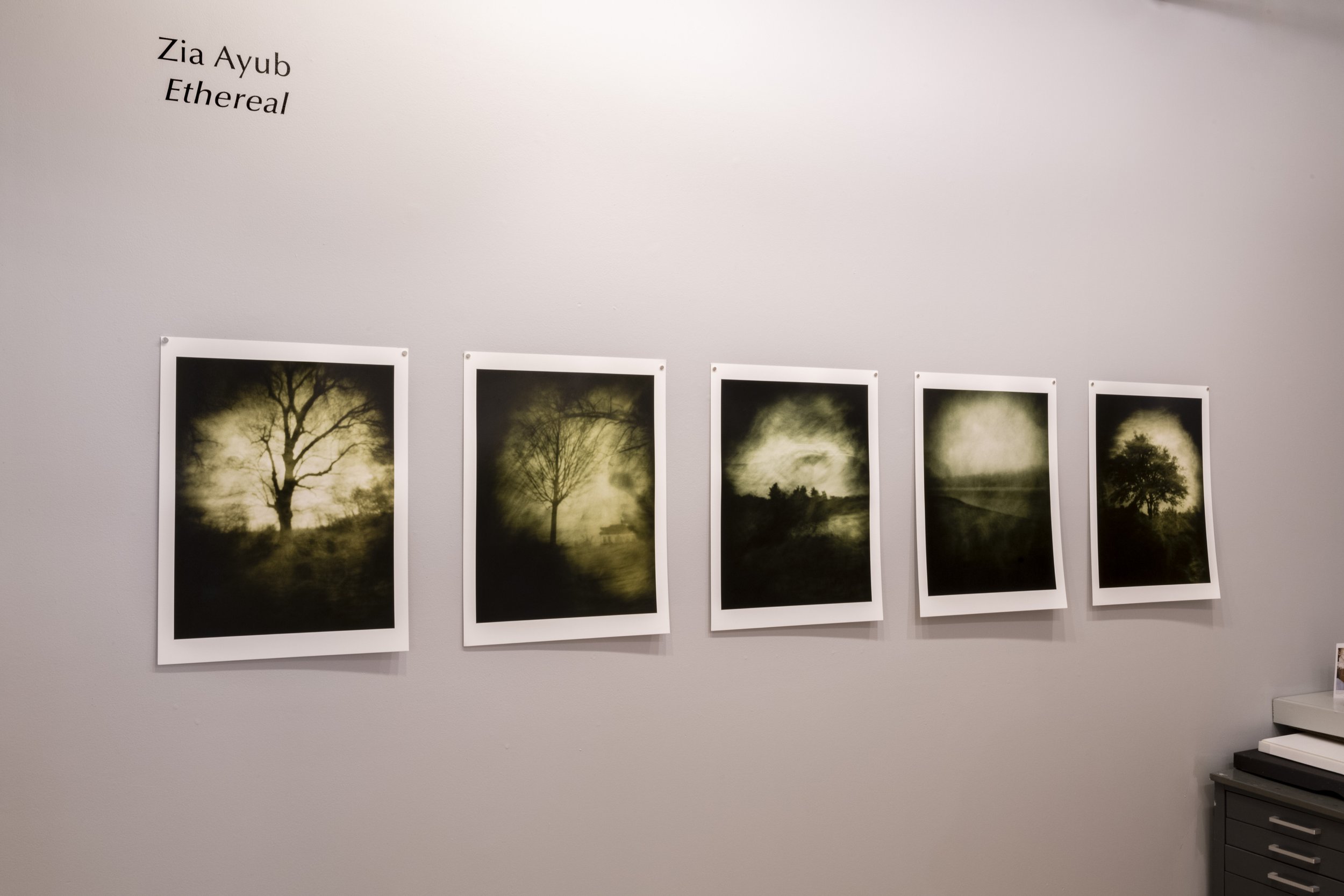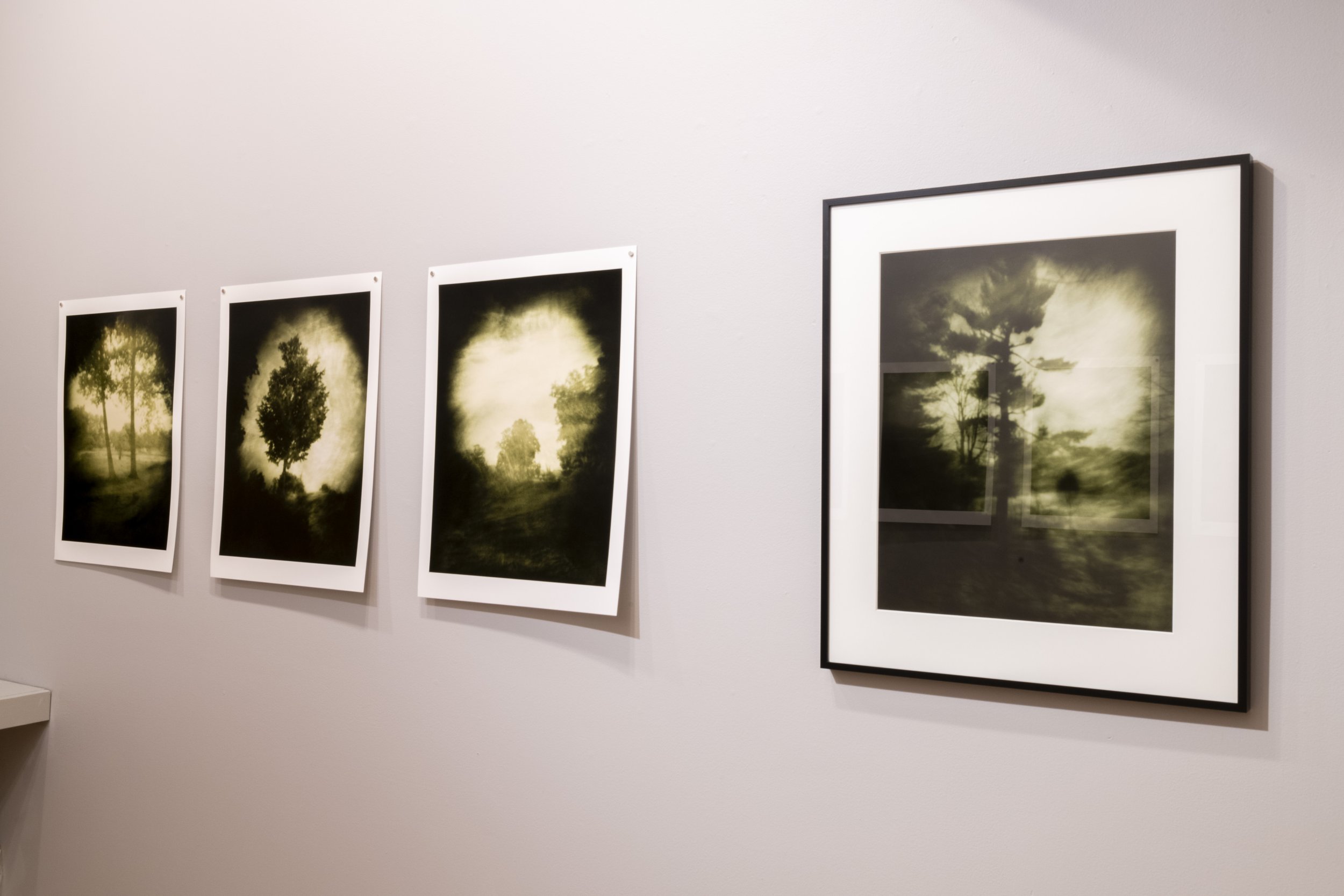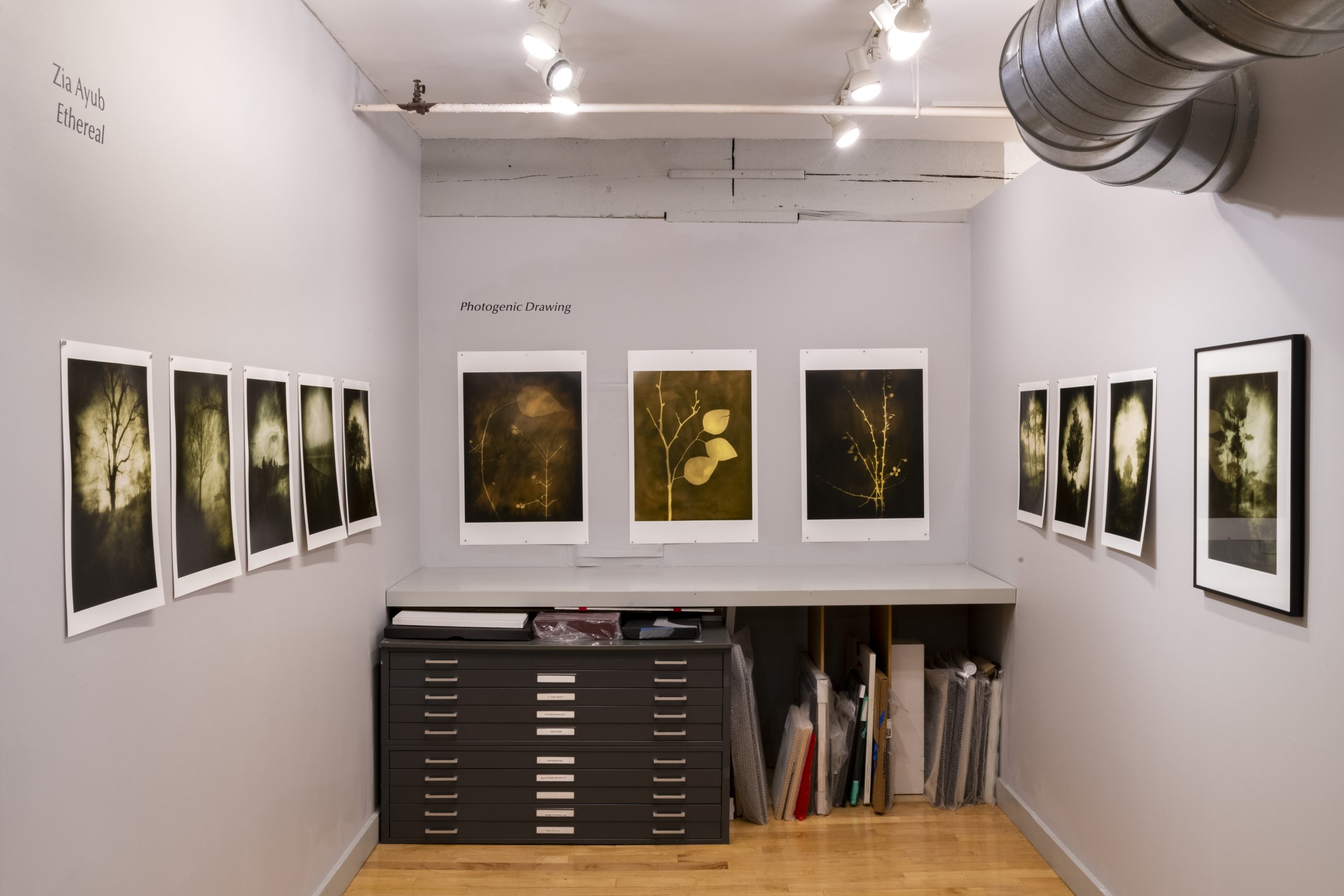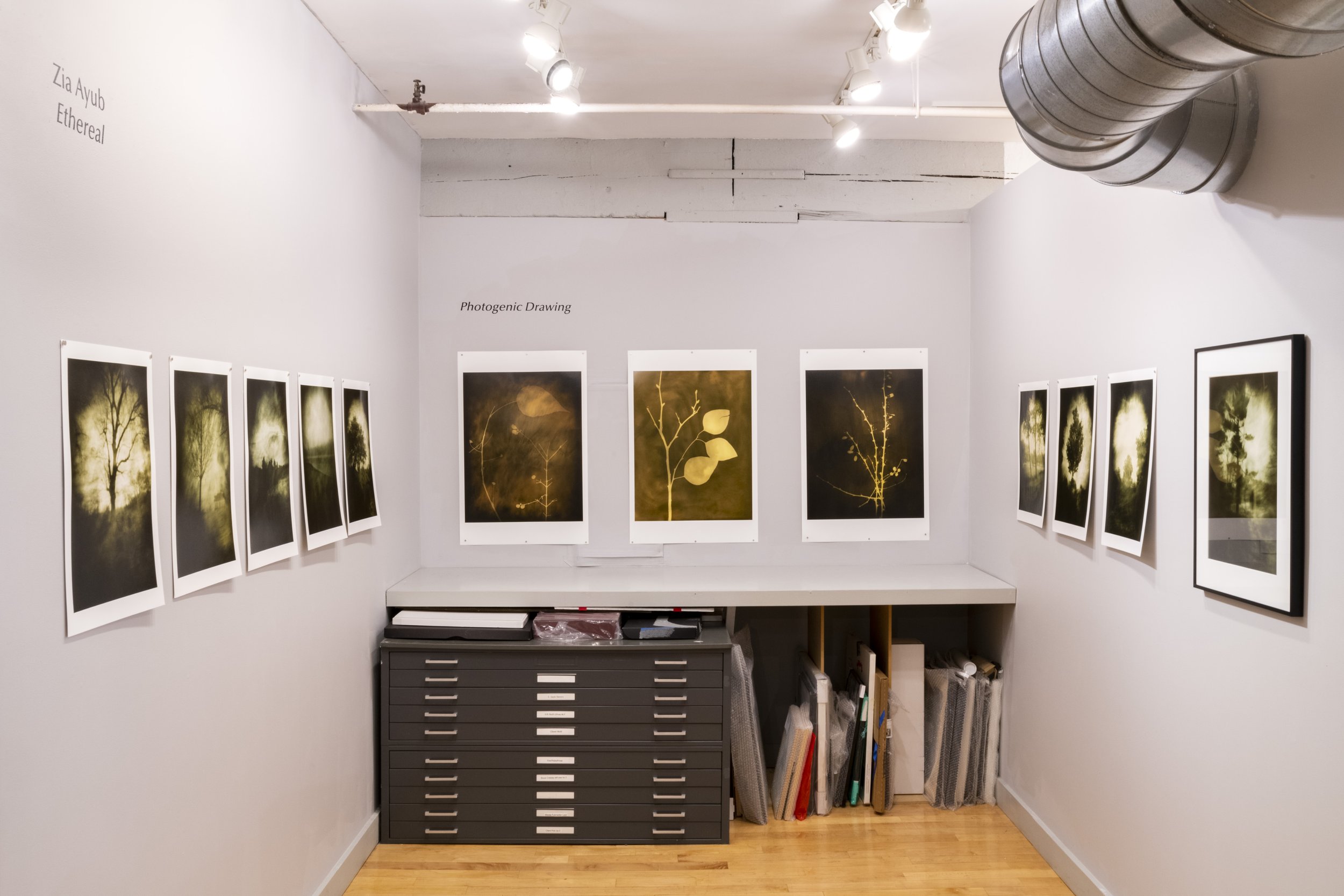Audrey Goldstein | Intimate Toxicities
The core philosophy and basis of my work is empathy. Through visual and participatory work, I focus on acts of generosity or their negation in our fraught environment that is both personal and political, external, and internal. As a sculptor with a painting background, I use materials to create moments of exchange that either cross material boundaries or emphasize them. These transitions appear to be merging molecularly, collapsing, or maintaining material integrities. The bleeding between materials simultaneously suggests growth and leakage of toxins.
My current series, Intimate Toxicities, looks at the results of brutish behaviors that have led to climate and health crises. In this body of work the landscape is internalized, not observed. The body is understood to be porous and a sponge for environmental poisons. The topographies in the work can be read as cell structures and land formations, bringing the environment directly into the body and collapsing our sense of proportion. While these topographies are not tied to a specific place and do not represent actual sites, the pigmentation is specific to satellite imagery of climate disaster. For example, Intimate Toxicities, Mustard Sweater, uses imagery from Afghanistan, Angola, Brazil and California before the recent rains.
The work is organized in neighborhoods or regions so the viewer can “walk” through its surfaces, as one would transverse a landscape. Mandala visualization practice inspired the process used in beginning the works, where one imaginatively builds the environment in expanding concentric rings. This allowed the topographies to grow organically and respond to the specific forms in each work. The disrupted, denied, and dangling houses in the work is based on pandemic walks, where the isolation of houses transformed them from places of safety to places of loneliness. Borders extend off the edges, in places, to become airborne and landless, referencing land erosion.
In Intimate Toxicities, Mustard Sweater, found sweaters, made to provide comfort, are used as fields of landscape, connecting the knit patterns with random papier mache’ cells. In places the unraveled yarns become rivulets cascading down the form. Hollows are used to create negative spaces, acknowledging the loss of life due to climate inequities. Houses made of cardboard, stitched together with cord, are covered in deep black, forming areas of denied structure.
House models were made as small silent buildings without entrances or exits. Houses promise a place of safety and comfort. But they become places of complacency, where wealth is protected, but not people. Floorplans are used to highlight careless development that willfully ignores climate change or can read as testimony to the lost homes from climate disaster.
In Intimate Toxicities, Red Sweater, the overall geometry pits the straight edge with the organic, pointing to the tension of the built world endangering the natural environment. Models of houses are covered in scraps of fabric, deconstructed to hang from threads. These form neighborhood clusters amid the wreckage of the topographic landscapes. Floorplans become entangled in random geometries.
In Conversation Quilt, the topography tumbles onto the floor and becomes a quilt. Seats placed around the quilt invite people to sit together for conversation, sharing themselves while the comfort of the weighted blanket covers their laps. Participants are invited to write their thoughts on provided tags. These can be attached to the foot of the quilt, allowing the quilt to grow heavier and fuller with the history of its stories.
Greg Heins | More and More and Then Some
The title of the exhibition, More and More and Then Some (from a Nina Simone song), reflects the use of repetition in these photographs. Sometimes the repetition occurs within a single image, sometimes it occurs by returning to the same or similar subjects or forms.
Repetition is a means of finding order in a chaotic world. We need a certain amount of disorder but during the past few years, we have often been overwhelmed by it. For example, a recent flurry of caution tapes and boundary ribbons in a park near my home was at first unsettling, coming at a time when we were all constantly told to be careful, to “shelter in place.” Were we being kept out or was the “natural” world being kept in, or both? I responded by working with a camera to tease out the visual satisfactions in these unpromising subjects.
Most of these photographs were made nearby and all of them in ordinary settings. When we can respond to the visual relationships that surround us in what Saul Leiter called “the overlooked ordinary,” the repetition of the photographic act itself gives a joy and freedom that indicates a path forward.
Zia Ayub
I started my journey as a fine art photographer in 1991. During the years of my studies, I fell in love with Pictorial Photography with its beautiful and impressionistic method renders a soft-focus and warm painterly style. Even to this day with many decades that have passed, I still never get tired of looking at the works by Julia Margaret Cameron, Alvin Langdon Coburn, Robert Demachy and Edward Steichen. And, yet my standard practice of using toy film cameras with its characteristic soft-focus and printing silver gelatin became limited to me. Although I have formal training in alternative processes, when I was studying in school the technique was exciting, the final results fell short of my expectations. Yet, I did not want to abandon the analog darkroom.
After many years of research and trial-and-error, in 2003, I discovered a new process by altering the chemistry of the silver gelatin print. I was now making unique one-of-a-kind prints. Still, I was not totally satisfied; continuing in my research, I experimented with a combination of digital and analog to create images resembling Pictorialism. The process is done without any usage of the 19th-century photographic processes—in simple terms, the process is a combination of analog and digital. Photogenic Drawings / Ethereal


